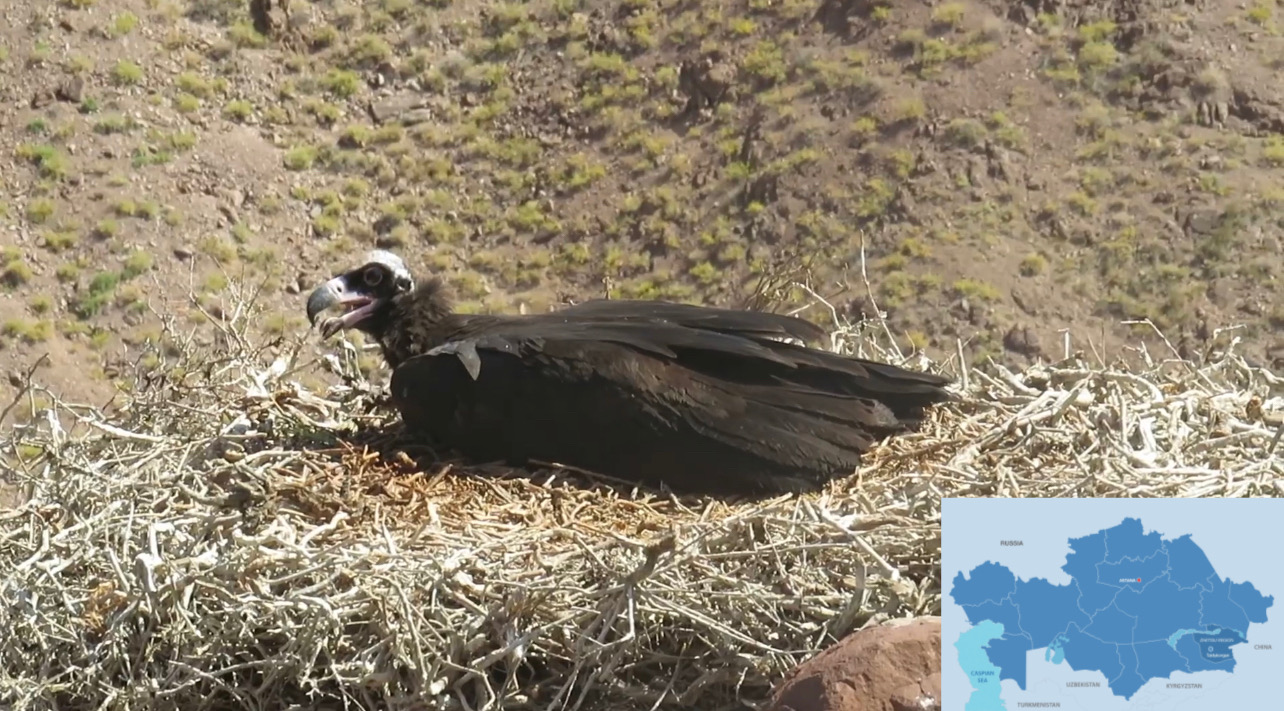ASTANA — An active nest containing a Cinereous vulture chick—also known as a black vulture—was recently discovered in Altyn-Emel State National Park, situated in the Ili River valley within Zhetysu Region, according to a statement from the park’s press service cited by Kazinform.

Photo credit: Instagram @altynemel_np. Click to see the map in full size. The map is designed by The Astana Times.
Often misunderstood, Cinereous vultures are frequently stigmatized as mere scavengers and considered unclean for feeding on animal carcasses. However, these majestic birds actually serve a vital ecological role as efficient recyclers. By disposing of deceased animals, they help maintain the cleanliness and hygiene of the park and curb the spread of zoonotic infections, which is particularly important for the health of the park’s kulan and gazelle populations.
Though the Cinereous vulture is not listed in Kazakhstan’s Red Book, it is featured on the International Union for Conservation of Nature’s (IUCN) Red List. The conservation of their breeding populations is a crucial task for zoologists. Discovering a nest is therefore a fortunate event, and the scientific department of Altyn-Emel National Park experienced just such luck on Aug. 23 of this year. Researchers found a flourishing Cinereous vulture nest nestled in the rugged terrain of the Big Kalkan mountains, replete with a young chick.
The nesting cycle for female Cinereous vultures usually begins between mid-March and April, with an average incubation period lasting about 55 days. The chick will typically stay in the nest for approximately three to three and a half months before embarking on its inaugural flight. Notably, these vultures are celebrated for their exceptional eyesight, capable of detecting prey from altitudes ranging between one to two kilometers—a visual acuity seven times greater than that of humans.
On Aug. 22-23, the scientific team from Altyn-Emel National Park undertook a field expedition to evaluate the health of the park’s diverse animal populations, encompassing both mammals and birds. The expedition covered the expanse of the Ili River floodplain, stretching from the Greater Kalkan Mountains to the Aktau Mountains. Researchers closely observed a wide array of desert and floodplain fauna, including kulans, gazelles, roe deer, and Cinereous vultures. To enhance monitoring, they also installed photo traps in key areas.
Alarmingly, there has been a notable increase in the jackal population within the Ili River floodplain. This uptick has had negative consequences on the reproductive success of both pheasants and roe deer, as well as affecting the availability of water at key spots along the floodplain. This underscores the critical role that the National Park’s scientific team plays in maintaining the park’s fragile ecological equilibrium.

